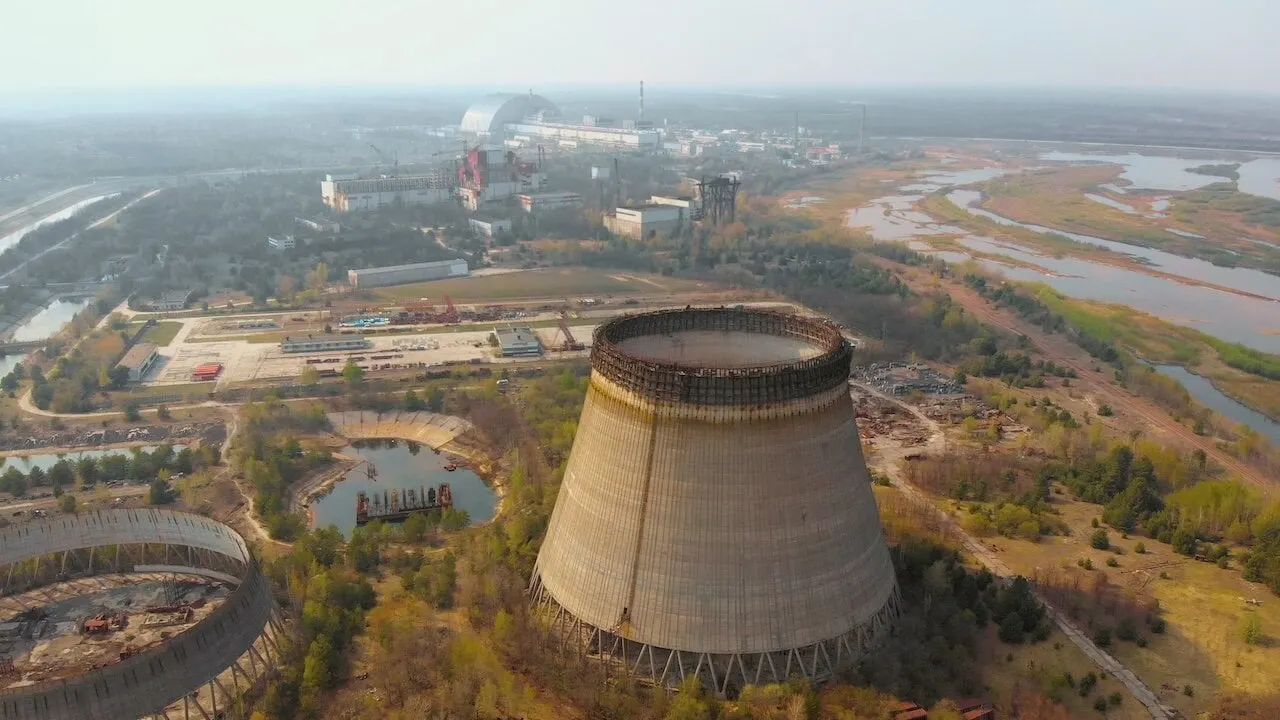In brief
- Stray dogs in the Chernobyl Exclusion Zone have been photographed with vivid blue fur—alive and seemingly healthy. 
- Caretakers suggest the most likely cause is chemical exposure, such as a leaking portable toilet, not radiation-induced mutation. 
- The incident draws attention to long-term environmental risks in zones of industrial or nuclear contamination and raises questions about unseen hazards.
Recent reports of stray dogs with bright blue fur near an abandoned chemical plant in Russia have inadvertently shined a new light on a more scientifically significant canine population: the dogs living within the Chernobyl Exclusion Zone.
The dogs, descendants of pets abandoned when the reactor at the nearby plant exploded in 1986, had appeared normal just a week earlier, according to caretakers. One Instagram post from Dogs of Chernobyl noted, “While catching dogs for sterilization we came across three that were completely blue. We’re not sure exactly what’s going on.”
While the blue coloring is believed to be the result of chemical exposure unrelated to radiation, the attention has highlighted a remarkable long-term study of the hundreds of semi-feral dogs that have survived for decades in the radioactive landscape left by the 1986 nuclear disaster.

Studying the radioactive dogs
For years, scientists have been working to understand how these animals endure in an environment with ambient radiation levels known to be harmful to life. A landmark study published in the journal Science Advances in 2023 provided the first definitive piece of the puzzle, confirming through genetic analysis that the Chernobyl dogs are a distinct population, genetically isolated and different from other dogs around the world.
This finding is the critical first step in a larger investigation into how a complex mammal adapts, or fails to adapt, to chronic radiation exposure. The work is led by a team of researchers at the University of South Carolina, who have been studying the zone’s ecosystem for decades. By sequencing the genomes of more than 300 dogs living in and around the former power plant, they have created a detailed genetic map of a population that has been largely inbred for 15 generations.
The study established a baseline of fact: the Chernobyl dogs are genetically unique. What remains speculative, and is the focus of the team’s ongoing research, is why. Scientists hypothesize that the intense selective pressure of the radioactive environment may have favored animals with specific genetic traits, potentially related to more robust DNA repair mechanisms or resistance to cancer.
The study did not, however, identify a silver bullet gene for radiation resistance. Researchers were careful to note that they have not yet proven that the dogs have evolved beneficial adaptations. It is also possible that the genetic differences observed are simply a result of isolation and inbreeding, or that the dogs’ health is still significantly compromised in ways not immediately apparent. The animals have notably shorter lifespans than typical domestic dogs.
The research has broader implications that extend far beyond canine biology. Understanding how these dogs’ bodies cope with the DNA-damaging effects of radiation could provide invaluable insights for human health. Potential applications include developing new therapies to protect cancer patients’ healthy cells during radiation treatment, or designing better safeguards for astronauts exposed to cosmic rays during long-duration spaceflight.
For now, the dogs of Chernobyl remain an interesting scientific mystery. The recent viral interest in their blue-coated—and presumably unrelated—counterparts has served to underscore the public’s fascination with the lingering effects of the disaster. But for scientists, the true story lies in the genetic code that may one day reveal the secrets of survival in one of the world’s most inhospitable environments.

